MSRP (*Base Edition)
Hybrid REEV | SUV | 210KM
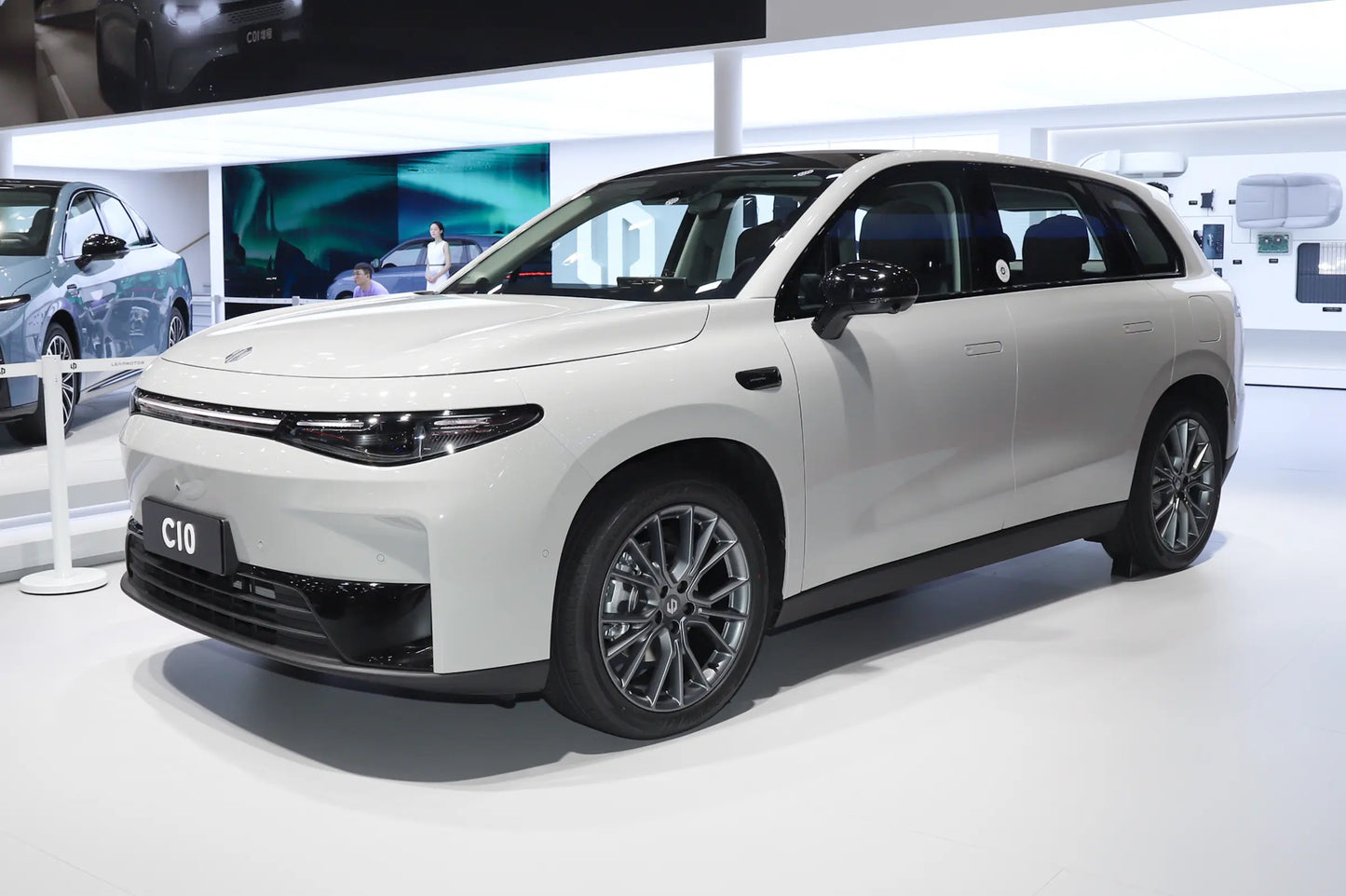
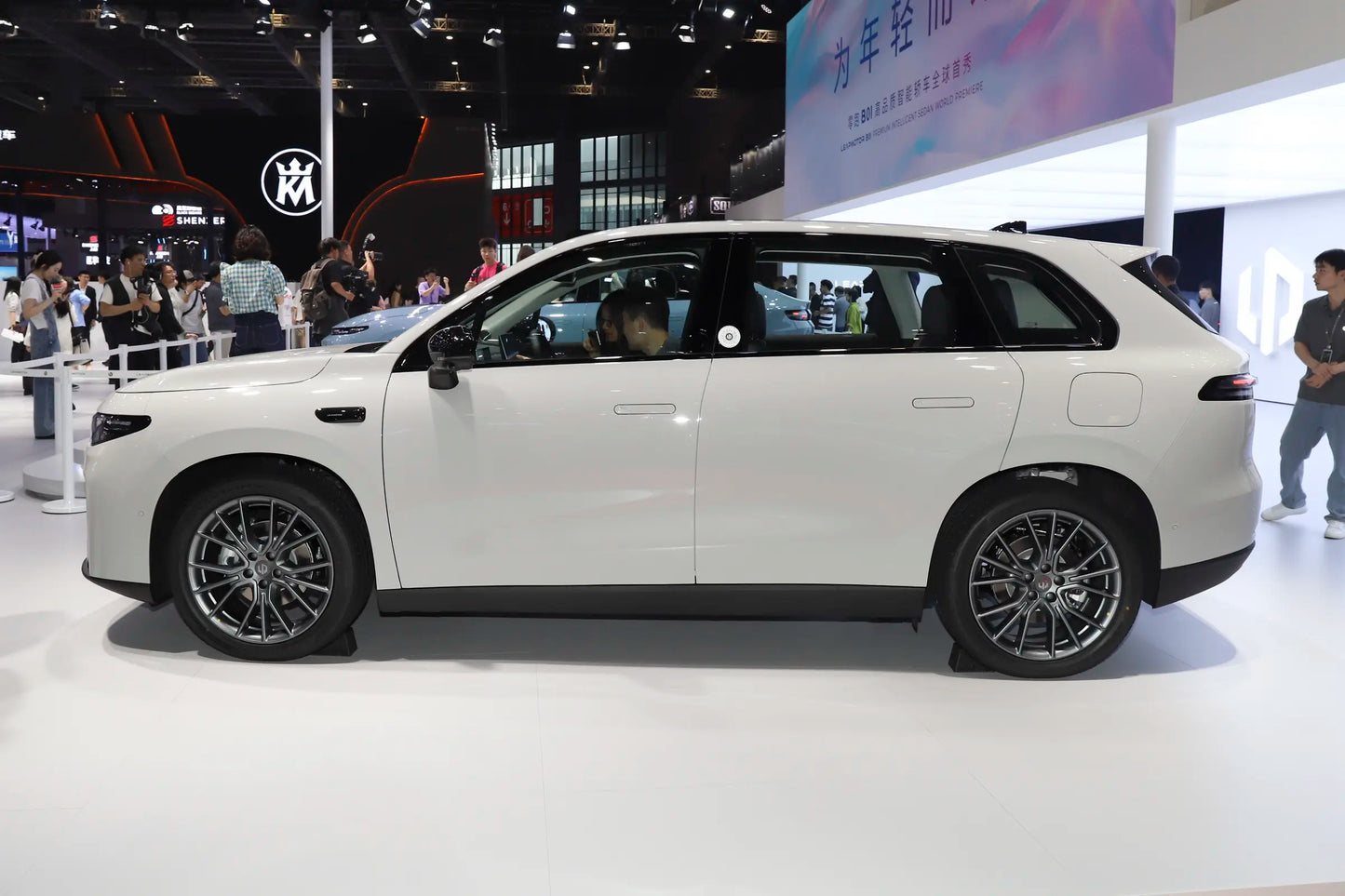
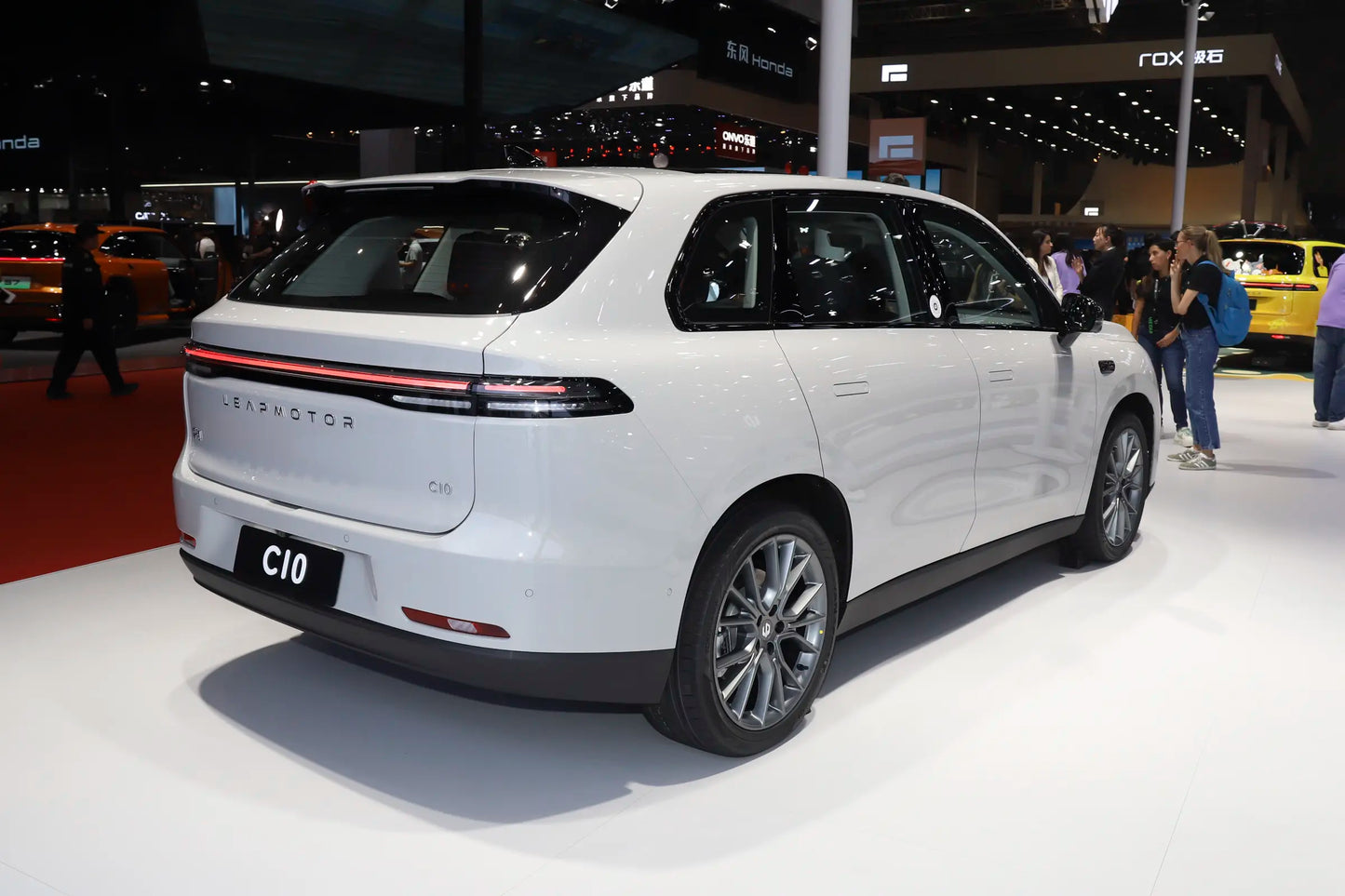
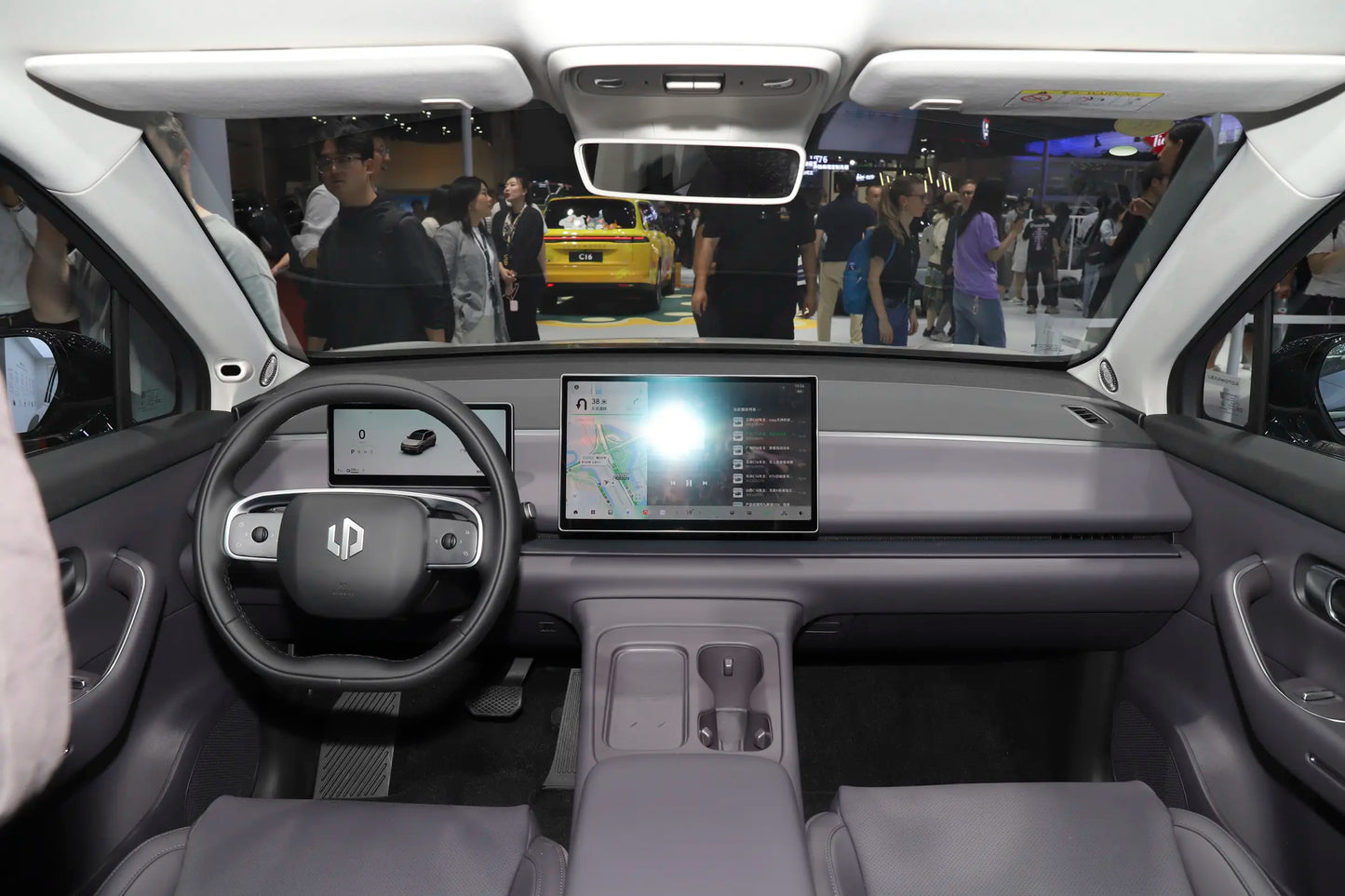
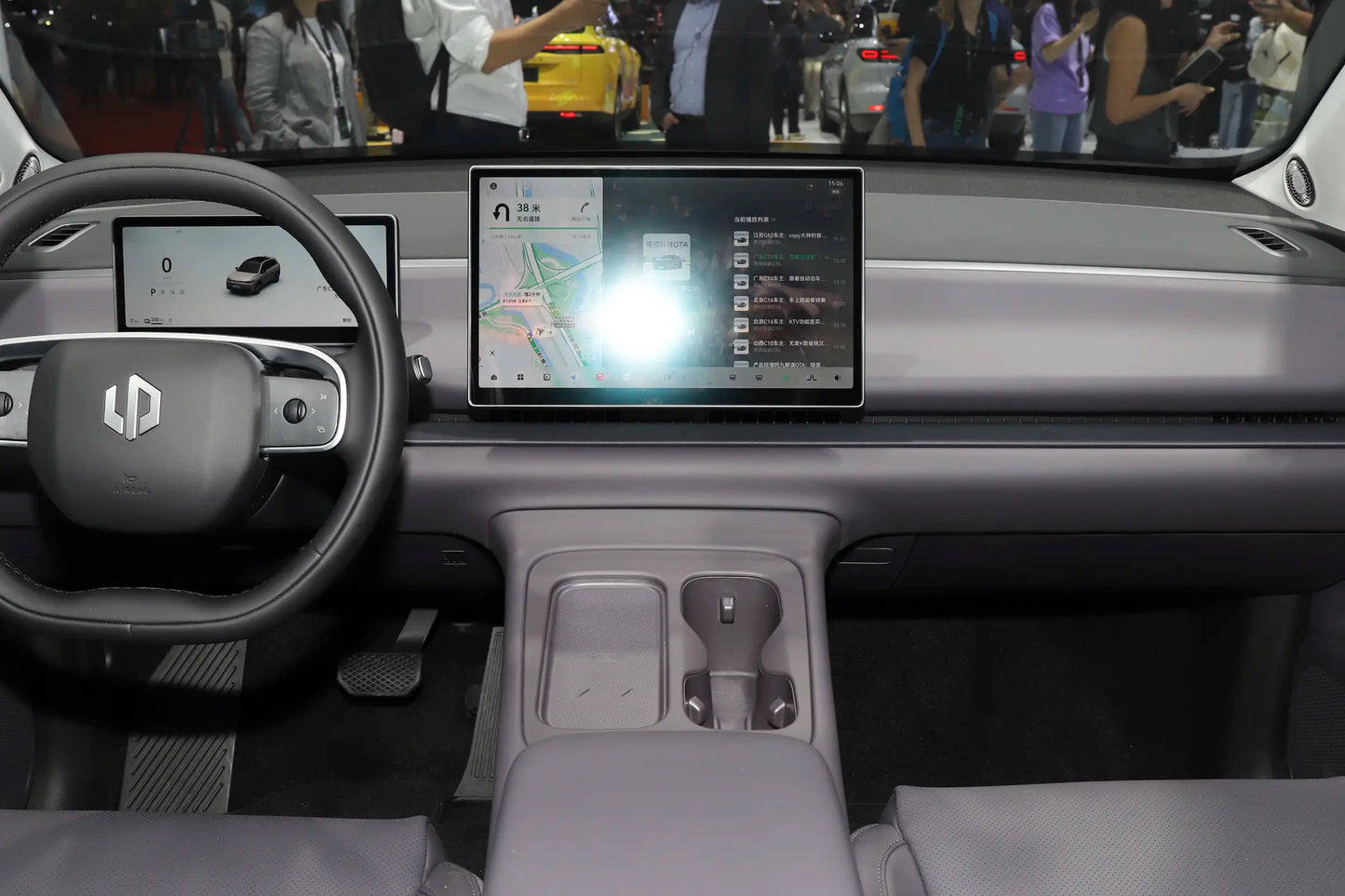
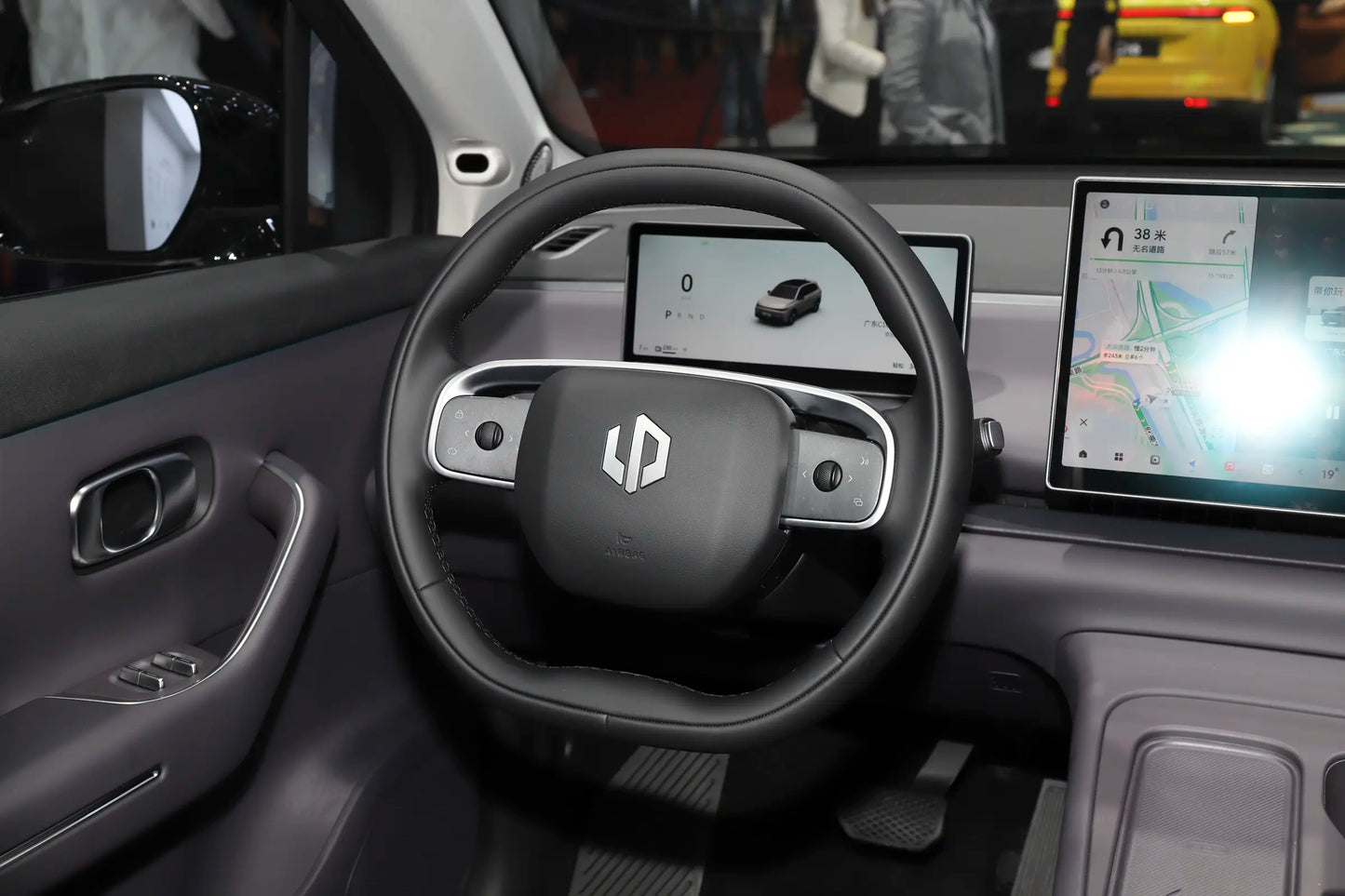

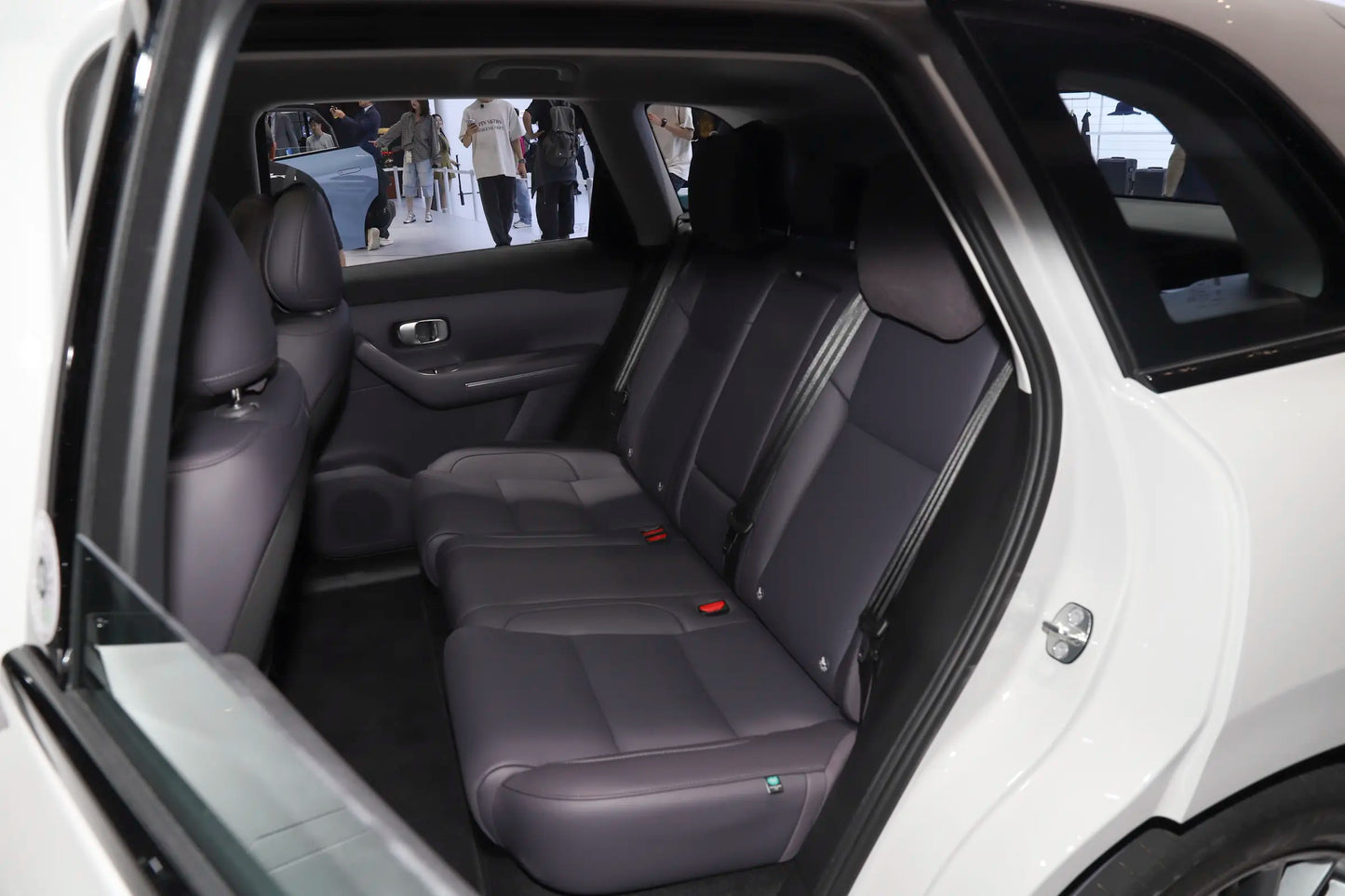
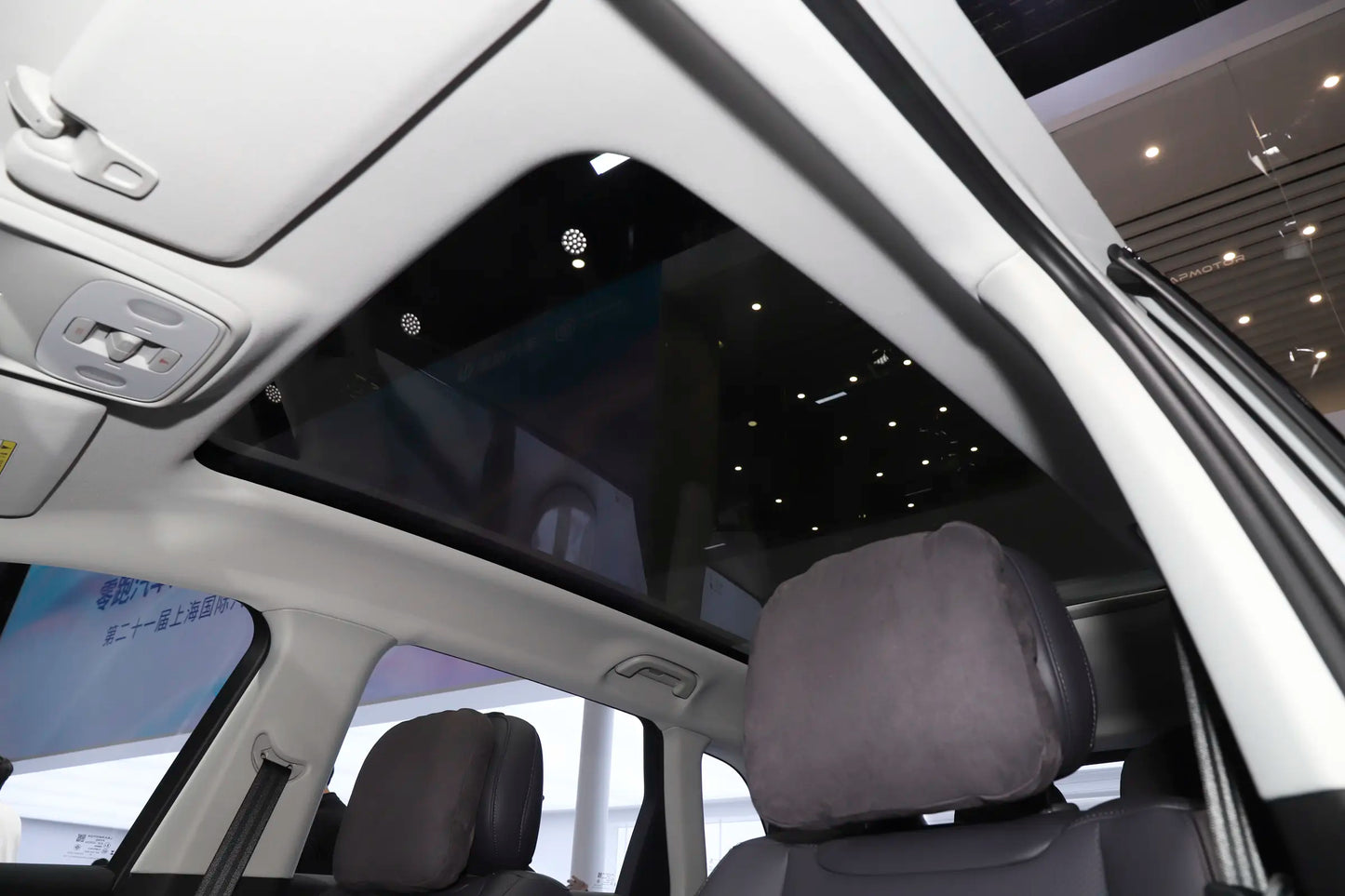
$18,420.00 USD
-
BrandLeapmotor
-
Vechile ClassSUV
-
Energy TypeHybrid REEV
-
Pure Electric Range(KM)210
-
Curb Weight (kg)1925
-
Battery Typelithium iron phosphate battery
-
Total Power of Motor (KW)170
-
Maximum Power(KW)70
-
Total Torque of Motor(N・m)320
-
Maximum Torque(N・m)/
-
Length x Width x Height(mm)4739x1900x1680
-
Official 0-100km/h Acceleration Time(s)7.68
-
Power Consumption(kWh/100km)18.1
-
Equivalent Fuel Consumption (Electricity)(L/100km)2.1
-
Battery Capacity(kWh)28.4
-
MaximumSpeed(km/h)170
-
Motor Layoutrear-mounted
-
Transmissionsingle-speed transmission
-
Displacement(L)1.5
-
Intake Typenaturally aspirated
-
IDre09001
Panoramic Interiors
Video Manual
Authentic on-site shots for an immersive vehicle detail experience
Real Customer Reviews
Source: DCAR
Review A
¡¾Vehicle Configuration¡¿
As mentioned earlier, the Xilu Purple exterior was love at first sight, and I went straight for this purple color. I initially thought it would cost extra, but later found out that the manufacturer offers purple and green exteriors as complimentary options¡ªkudos to the manufacturer for this policy. The overall body appearance is quite harmonious; I personally prefer this slightly rounded body shape. The interior is relatively simple, and it feels like current new energy models are quite similar. There's empty space under the armrest, with phone charging ports and cup holders on top, and basically no physical buttons.
¡¾Space Performance¡¿
In terms of space, compared to my previous sedan, I'm quite satisfied so far. At 175 cm tall, there's plenty of room, and I don't feel cramped at all. The back seat is also spacious enough¡ªmy father, who weighs 180 jin, also says it's comfortable.
¡¾Smart Cockpit¡¿
I haven't experienced the welcome feature yet, and the salesperson didn't introduce it either. When switching driving accounts, the seat memory function works intermittently. The seats are moderately firm with not strong wrapping, after all, there's no lumbar support or leg rest. The headrest position is relatively high; I'll see if it can be adjusted up and down when using the car soon. I'm currently using the seat ventilation. When the car interior temperature is 40-50¡ãC, the ventilation isn't very timely. I usually have to wait for the air conditioning to cool down the interior before feeling the breeze from the seats. Overall, compared to fuel-powered cars, theÖÇÄܻ¯ is quite obvious, but sometimes Xiaoling (the voice assistant) records commands and also automatically generates a long AI response, which is a bit distracting.
¡¾Driving Experience¡¿
Maybe because I used to drive a sedan, my family feels that this car drives a bit floaty, not very grounded, and the grip isn't as good as a sedan. When going over potholes and bumpy roads, it's not as comfortable as my previous sedan. The front passenger seat feels okay, but there's definitely a×óÓÒ swaying sensation like being on a boat. After driving for a few days, I feel dizzy badly every time. Could it be the hot weather? Or the smell of interior materials? Or maybe the chassis feeling like a boat?
¡¾Range and Energy Consumption¡¿
I've driven about 470 kilometers so far, only using the car on weekends, with roughly half highway and half city driving. The tire noise on the highway feels manageable, not too loud. But in summer, I definitely use the air conditioning all the time, and its energy consumption accounts for over 20%, which is quite high. A full charge shows a range of 605 km, but with 53% battery, I've only driven 221 km. Calculated to 100%, the maximum range would be 417 km, equivalent to 69% of the claimed range¡ªa pretty big discount. Looking at it this way, the range in Qingdao might drop to 50% in winter, which still causes some range anxiety. On the highway, the speed is usually limited to 120 or 100 km/h. At 120 km/h, the C10's power consumption should have reached 40 kW, which is high. At 60 km/h in the city, the power consumption is acceptable.
¡¾Charging Time¡¿
I've only experienced the slow charging with the complimentary charging pile so far. But I'm not sure if it's a problem with the charging pile itself or the power supply¡ªit took 14 hours to charge from 47% to 100%, with a power of about 2.4 kW. I've reported this issue to the charging pile customer service, but there's no good solution yet. I haven't tried fast charging.
¡¾Driver Assistance¡¿
I don't really dare to use the driver assistance. Some people online say that during assisted driving, the car may "snake" (drift?) and change lanes across solid lines. I'm taking a wait-and-see attitude towards Leapmotor's current driver assistance technology, and since I haven't driven other new energy vehicles, I won't comment further.
¡¾Most Dissatisfied¡¿
Although the Leapmotor C10 Laser Radar version is said to be the top configuration, the dashcam only covers the front and doesn't have a 360-degree recording function. However, the mid-range model actually has this feature. I don't know if it's a technical or design issue, or if it can be resolved through subsequent OTA updates. For now, it's a trade-off in configuration, and you can't have both.
Overall, the car experience is good. I'll share more if I have new experiences later!
Review B
¡¾Car Buying Experience¡¿ This car is a replacement for my wife. She originally used a Hongguang Mini to drop off and pick up the kids. Considering both kids are growing older and wanting longer range, we started looking at cars at the end of 2023. After comparing many options, we ultimately chose the C10. I'll write a more detailed review after driving it more. Having driven it about 100 kilometers now, here are my initial impressions.
1. Exterior: In my thirties, I can appreciate overly aggressive designs but don't particularly like them. So I ultimately chose between the ID.4 and C10, and went with the C10 due to pricing. Almost everyone around me describes the C10 as having rounded styling. It has no standout features, nor is it as good-looking as the L6, but its more moderate design compared to other newÊÆÁ¦ (new power) brands is acceptable.
2. Interior: This is where both my wife and I are satisfied. It's¼ò½à´ó·½ (simple and elegant) with no complicated lines, creating a very comfortable look. Choosing the purple interior ¨C anyone who's seen the actual car would agree it's a good choice.
3. Configuration: Added the package, so it basically has everything we wanted. Let me just mention the missing features compared to other brands in the same price range ¨C things I actually wish it had: 1) Driver's seat lumbar adjustment; 2) Passenger seat height adjustment; 3) Seatbelt height adjustment; 4) Power door handles. As for tire pressure display, since my previous car was the same way, I don't find it inconvenient ¨C just pay attention when the alarm goes off. Another thing is the almost complete lack of physical buttons; controls for interior/exterior lights can be inconvenient in specific situations.
4. Space: Space is definitely a highlight. No one in my family is over 175cm, and there's plenty of headroom, legroom, and width. The design is very reasonable, and storage space is sufficient too ¨C you'll feel it when you see the actual car. Combined with the minimalist style, it stands out refreshingly compared to other models. Especially the rear seat support is adequate, legroom is ample, and the floor is flat ¨C my 7-year-old daughter can even¶× (squat) and play on the floor without issues. The trunk, which compromises for passenger space, isn't huge but is absolutely enough for my wife's daily usage scenarios ¨C the designers' planning definitely aligns with my preferences. Additionally, there's lots of hidden space under the EV's trunk board ¨C I've stored the charging gun, air pump, a folding chair, two umbrellas, a car fire extinguisher, towels, and still have room left. Now there are also frunk accessories available online, expanding storage capacity further. It would be ideal if the pure electric front end was designed shorter, keeping the total length under 4.7 meters.
5. Range: The license plate hasn't arrived yet, making it inconvenient to enter/exit the unit and home gates, so my wife hasn't really driven it. Fast-charged once at the 4S shop to 90%, and I've driven about 130km since then with the AC running constantly. Energy consumption has been below the rated value. This was the first charge though, so range might not be accurate yet. Once my wife starts daily low-speed city driving for school runs, I expect it to be even lower.
6. Intelligence: Haven't experienced the overly sensitive automatic emergency braking that some netizens mention. Tested it myself in busy, complex road conditions and it's been fine. The issue is that settings like automatic braking and pedestrian warning sounds don't save ¨C they reset on startup. ACC works fine. LCC on national roads is slow to respond to curves, sometimes crossing lane lines, requiring me to intervene each time. It came with the latest system from the factory and still needs optimization. Other active safety features like reverse collision warning and door opening warning have been tested and work well as safety aids. Male drivers will find these useful, but my wife ¨C like many female drivers, I suppose ¨C doesn't have time to pay attention or understand what the alerts mean. She won't listen when I try to teach her, so we'll just wait for her to adapt gradually.
7. Driving Experience: Before ordering, I test drove the ID.4, Song PLUS, S7, and T5 multiple times ¨C might be helpful for other netizens. The ID.4 has the best drivingÖʸÐ (texture) and chassis feedback, even better than gasoline cars like the Tiguan and Kuga ¨C no doubt about that. Plus its compact size makes U-turns easy, ideal for city driving. I was set on the top trim, but gave it up due to price considerations. Among the rest, the S7, T5, and C10 are quite similar, with the Song PLUS being slightly behind ¨C possibly due to its older platform. After comparing exteriors and interiors, we chose the C10.
a. Low-speed city driving has that common EV heaviness (not solidity), like a fully-loaded gasoline car. The chassis feels stable but the car feels±¿ÖØ (bulky) and not very agile ¨C probably due to its weight. It gets much better between 50-100km/h. Haven't driven it above 100km/h on the highway yet.
b. Suspension is on the soft side, giving that "floating" feeling like a Highlander. There's some¶àÓàµĵ¯Ìø (excess bounce) over potholes on paved roads, but this tuning provides a very comfortable ride on rough roads.
c. On 70-80km/h expressways, the ride quality is excellent. The chassis shows goodÈÍÐÔ (resilience), and combined with above-average NVH, it's aÇáËÉÓäÔà (relaxing and enjoyable) drive. Overall, domestic SUVs in this price range aren't drastically different; the choice more comes down to brand and features.
8. Areas for Manufacturer Improvement:
a. 20-inch tires as a separate option. They're expensive to replace and increase energy consumption, plus the 45-profile is too thin ¨C makes me nervous going over bad roads or curbs. Either offer nicer designs for the 18-inch wheels or a 19-inch option with 50-profile tires.
b. Optimize LCC. Minor wander is okay, but it definitely shouldn't cross lane lines.
c. Add protective covers for the high-voltageÏßÊø (wiring harness) connections under the chassis. After watching ´ó±ù¿é's (Big Ice) teardown video, it seems the battery protection is lacking here.
d. Switch to power door handles in future models. For daily use, kids have trouble opening the doors with their small hands, and I sometimes accidentally scratch the paint with my nails.
e. The tundra gray color I chose has uneven paint on the bumpers ¨C visible graininess in sunlight, different from the body paint.
f. Glove box space could be optimized ¨C it's really too small.
g. With such powerful infotainment hardware, more effort should be put into OTA updates, like MIUI did in its early days ¨C listen to user feedback and push timely optimizations.
My wife was initially reluctant to buy another electric car, especially from a new brand like Leapmotor without major manufacturer backing. She only reluctantly agreed after my repeated persuasion. So I hope Leapmotor can maintain its highÐԼ۱È (cost-effectiveness) while improving quality, becoming a long-standing player in the new energy market.
Review C
First, let's talk about its value-for-money aspects. The price is indeed very reasonable, and the configuration offered at this price point is really rare. Regardless of the model, it comes standard with the Qualcomm 8155 chip and L2-level assisted driving. Looking at the hardware alone, it is a notch above cars like the BYD Song PLUS in the same price range. The space is also well-designed; the 2825mm wheelbase makes the interior very spacious, with rear legroom being one fist more than the Song PLUS. When the rear seats are folded down, the trunk can expand to 1100 liters, which is very convenient for family use to carry things. The infotainment system is quite user-friendly, almost as smooth as a flagship mobile phone. The voice control can handle continuous speech for a minute, so you don't have to take your hands off the wheel to adjust the navigation or air conditioning during long drives. The automatic parking is also quite accurate, allowing even new drivers to easily park into small spaces.
However, its issues do significantly affect the experience. For the pure electric version, in cold winter weather, the range drops severely; at minus ten degrees, it may only have half the range left. Usually, the actual mileage that can be driven is also 10-20% less than the official claim. Wind noise and tire noise are more noticeable than other cars when driving on highways. The infotainment system occasionally has minor glitches, such as stuttering in the 360-degree camera and slow response from the navigation at times, which can easily lead to missing turns. The assisted driving is a bit unstable in curves, and the radar often gives false alerts on rainy days. The suspension is tuned too much towards comfort, causing significant body shaking during high-speed lane changes. The brake feel is a bit spongy, and on rainy days, it can even make people feel like they can't stop in time. The interior build quality is also average; some cars may have issues like peeling rubber strips and overheating wireless charging pads.
In addition, the Leapmotor brand is not as well-known as BYD or Tesla, and there are fewer after-sales service outlets. In third- and fourth-tier cities, you might have to travel to another city for repairs, and software updates still require a visit to the store, which is quite inconvenient. Previously, old car owners also had complaints about sudden price cuts and changes in battery suppliers.
Overall, this car is suitable for family users who value practicality and cost-effectiveness. If you can accept these minor flaws and the inconvenience of after-sales service, it is indeed a very cost-effective choice.











